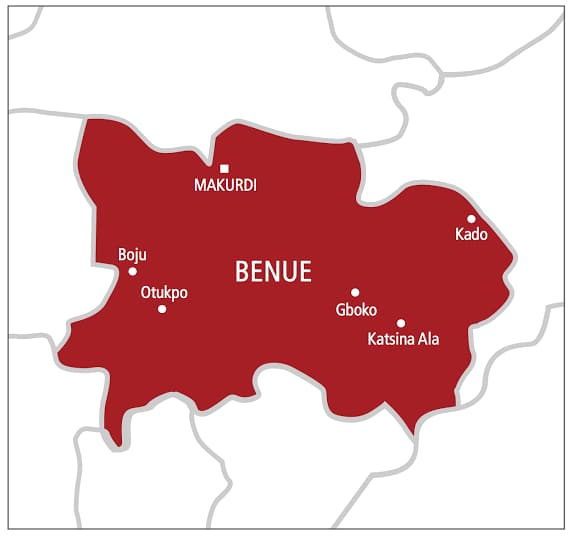In a significant step toward alleviating the economic burdens faced by millions of Nigerians, the Federal Government has announced that 2.3 million households have successfully received payments under the ongoing Conditional Cash Transfer (CCT) program. This initiative, a cornerstone of Nigeria’s social safety net, is designed to cushion the effects of recent economic reforms, such as the removal of fuel subsidies and the unification of foreign exchange rates. As inflation and living costs soar, the CCT program provides critical financial relief to the nation’s most vulnerable populations. In this detailed blog post, we’ll explore the program’s structure, objectives, achievements, challenges, and its broader implications for Nigeria’s economic and social landscape, drawing on the latest available information.
The Context: Economic Reforms and Their Impact
Nigeria’s economy has faced turbulent times in recent years. In May 2023, President Bola Tinubu’s administration introduced sweeping economic reforms, including the elimination of a decades-long fuel subsidy and the floating of the naira. These measures aimed to reduce fiscal strain, attract foreign investment, and stabilize the economy. However, they triggered immediate consequences for ordinary Nigerians. Fuel prices surged, transportation costs skyrocketed, and inflation climbed to nearly 30% by mid-2024, a 28-year high. According to the National Bureau of Statistics, the poverty rate has risen, with over 133 million Nigerians living below the poverty line as of 2024.
The CCT program, part of the National Social Safety Nets Project (NASSP), was established to address poverty and vulnerability, but it took on renewed importance following these reforms. Supported by a $800 million World Bank loan, the program seeks to provide financial support to 15 million households, offering a lifeline to those struggling with the rising cost of living. The confirmation that 2.3 million households have received payments marks a significant milestone in this ambitious effort.
How the Conditional Cash Transfer Program Operates
The CCT program, also known as the Household Uplifting Programme (HUP-CCT), is managed by the National Cash Transfer Office (NCTO) under the Federal Ministry of Humanitarian Affairs, Disaster Management, and Social Development. Below is a comprehensive overview of its key components:
-
Beneficiary Selection:
-
The program targets poor and vulnerable households identified through the National Social Register (NSR), a database built using a Community-Based Targeting (CBT) approach. Community leaders help identify eligible households based on poverty indicators, such as lack of access to clean water, electricity, or stable income.
-
A Proxy Means Test (PMT) is applied to rank households by socio-economic status, prioritizing the poorest. To enhance transparency, beneficiaries must undergo biometric verification, linking payments to their National Identification Number (NIN) and Bank Verification Number (BVN).
-
The NSR revalidation exercise, completed in early 2025, ensured that only eligible households remain in the program, addressing concerns about inaccuracies in the register.
-
-
Payment Structure:
-
Eligible households receive a base transfer of NGN 5,000 per month (roughly $3 at current exchange rates) to support basic consumption and savings.
-
An additional “top-up” of NGN 5,000 is provided for households meeting specific “co-responsibilities,” such as ensuring children attend school, completing vaccinations, or participating in nutrition programs. These conditions vary by state and aim to promote human capital development.
-
In response to the fuel subsidy removal, the government temporarily increased payments to NGN 25,000 per month for three months in 2023, providing a total of NGN 75,000 to help households cope with immediate economic shocks.
-
-
Disbursement Mechanisms:
-
Payments are made directly into beneficiaries’ bank accounts or mobile money wallets, minimizing cash handling and reducing the risk of fraud. The government has also explored mobile phone-based transfers, as recommended by the Fiscal Policy and Tax Reforms Committee, to improve efficiency.
-
Recent disbursements include NGN 20.96 billion to 838,223 households in September 2024 and NGN 10.28 billion to 411,292 households in October 2024, showcasing the program’s scale.
-
-
Livelihood and Empowerment Components:
-
Beyond cash transfers, the program offers training and support to encourage sustainable livelihoods. Beneficiaries are taught financial literacy and entrepreneurship skills, with the goal of transitioning them out of poverty.
-
The program emphasizes an “enterprise mindset,” encouraging households to invest in income-generating activities, such as small-scale farming or trading.
-
Milestones: Reaching 2.3 Million Households
The Federal Government’s announcement that 2.3 million households have benefited from the CCT program reflects significant progress. This figure was confirmed following a rigorous revalidation of the NSR, led by the National Identity Management Commission (NIMC) and supported by an inter-agency task force under Vice President Kashim Shettima. The revalidation addressed concerns raised by the World Bank, which noted in April 2025 that only 5.6 million households (37% of the 15 million target) had received payments.
Key disbursements in 2024 include:
-
August: NGN 3.83 billion to 153,038 households.
-
September: NGN 20.96 billion to 838,223 households.
-
October: NGN 10.28 billion to 411,292 households.
These payments have provided immediate relief, enabling families to afford essentials like food, medicine, and school fees. For many, the cash transfers have been a critical buffer against the economic fallout of subsidy removal and currency devaluation.
Challenges Facing the Program
While the CCT program has made strides, it faces several hurdles that limit its effectiveness:
-
Slow Scale-Up:
-
The program has struggled to meet its target of 15 million households. The World Bank’s April 2025 report highlighted that only 5.6 million households had been reached, citing delays in NSR revalidation and biometric verification.
-
Administrative bottlenecks, including coordination challenges between federal and state agencies, have slowed implementation.
-
-
Limited Economic Impact:
-
A 2024 World Bank evaluation found that the CCT program had modest effects on household consumption, financial inclusion, and women’s employment. The NGN 5,000 monthly transfer, while helpful, is often insufficient given inflation rates.
-
Critics argue that without complementary interventions, such as job creation or infrastructure development, the program’s impact on poverty reduction remains limited.
-
-
Transparency and Accountability Issues:
-
The program has faced allegations of mismanagement. In 2023, the suspension of former Minister Betta Edu over alleged diversion of funds raised concerns about accountability, leading to a temporary pause in disbursements.
-
While measures like direct payments and biometric verification have reduced fraud, public trust remains fragile.
-
-
Exclusion Errors:
-
Some of the poorest households, particularly in remote areas, are excluded due to difficulties meeting co-responsibilities (e.g., lack of nearby schools or clinics). This undermines the program’s goal of reaching the most vulnerable.
-
Community-based targeting has also led to complaints of favoritism, with some non-poor households reportedly benefiting at the expense of those in greater need.
-
Impact and Opportunities
Despite these challenges, the CCT program has delivered measurable benefits:
-
Immediate Relief: Cash transfers have helped households cover basic needs, reducing hunger and debt. Beneficiaries have reported using funds to buy food, pay school fees, or invest in small businesses like poultry or tailoring.
-
Human Capital Gains: By incentivizing school enrollment and healthcare visits, the program contributes to long-term improvements in education and health, key drivers of poverty reduction.
-
Financial Inclusion: The use of bank accounts and mobile wallets has brought many beneficiaries into the formal financial system, fostering savings and access to credit.
The program’s potential is immense, but realizing it requires addressing structural challenges. Scaling up to 15 million households, improving payment efficiency through digital platforms, and integrating the program with broader economic policies (e.g., job creation or agricultural support) could amplify its impact.
Public Perception and Future Directions
Sentiments on X about the CCT program are mixed. Some users commend the government’s efforts, with posts highlighting the 2.3 million household milestone as evidence of commitment to the poor. Others criticize the program’s slow pace and limited reach, echoing the World Bank’s concerns. For example, one X post noted, “2.3m households is progress, but 15m was the promise. FG needs to step up.”
Looking forward, the government’s focus on digital payments and NSR revalidation suggests a commitment to improving efficiency. Plans for a social security program for unemployed youth and a consumer credit scheme could complement the CCT, addressing broader economic vulnerabilities. The World Bank has also recommended investing in health, education, and rural infrastructure to maximize the program’s benefits.
Join our Whatsapp channel to stay updated always!



I applied for CCT at Bida and message to collect the ATM at Paikoro all in Niger State. I was told by one of the facilitators (Aminu Bawa)that my NIN does not Tally. So I have not got my money. I spent more than #10,000 from Bids to Paikoro.I need help.My detained…. Muhammad Danjuma. My NIN;9032 836 8079. BVN;22336254777. Thanks